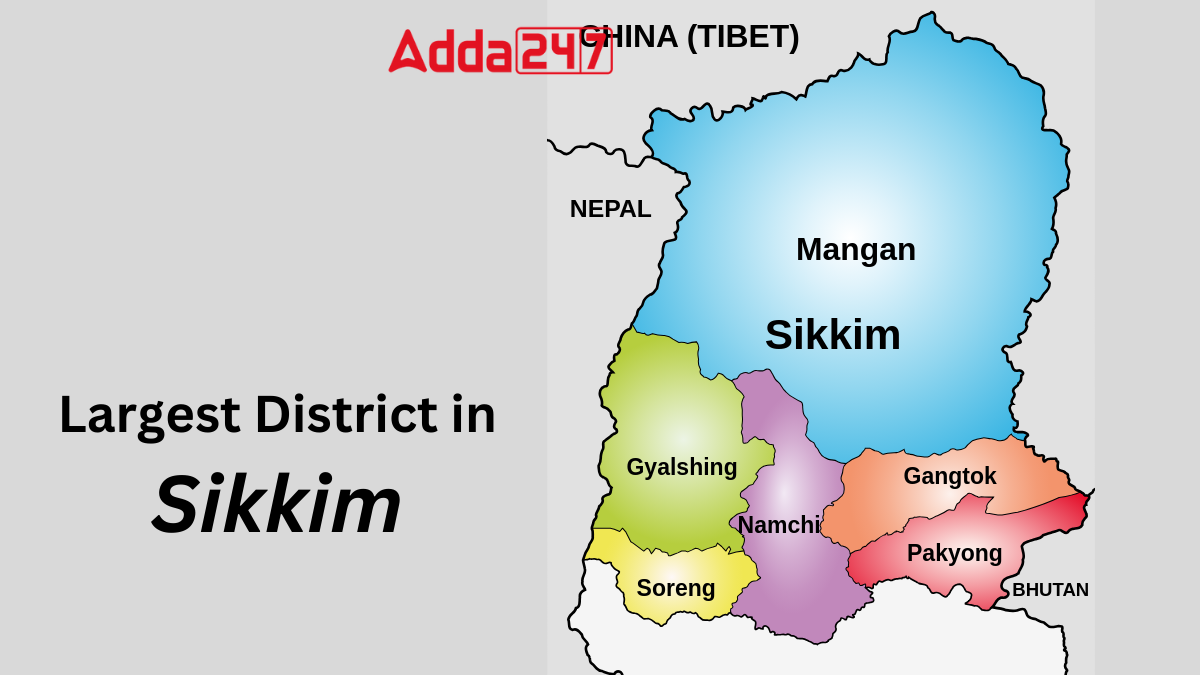Nestled in the northeastern part of India, Sikkim stands as a jewel in the Himalayas, known for its breathtaking landscapes, cultural richness, and pristine natural beauty. While it may be one of the smallest states in India, Sikkim boasts a diverse topography and a rich cultural heritage that attracts tourists from all over the world. Within this picturesque state lies Mangan, the largest district, renowned for its towering mountains, lush valleys, and vibrant culture.
How many Districts are there in Sikkim?
Sikkim, situated in northeastern India, is a landlocked state renowned for its breathtaking beauty. Spanning 7,096 square kilometers, it stands as one of India’s smallest states. The region is organized into six districts and 16 subdivisions, each overseen by its District Magistrate and Sub-Divisional Magistrate.
Largest District in Sikkim in terms of Area
Mangan, situated in the northeastern state of Sikkim, stands as the administrative hub and nucleus of Mangan District. Enveloped by the serenity of the Teesta River, this town serves as a pivotal link to the capital city, Gangtok, via a well-connected metalled road. Mangan District claims the title of the largest district in Sikkim, boasting a vast expanse of scenic beauty and cultural richness.
Key Facts Related to Biggest District in Sikkim
Here are the key facts related to Mangan, the biggest district in Sikkim:
- Mangan serves as the headquarters of Mangan District, the largest district in Sikkim.
- Located near the Teesta River, Mangan is connected to the capital Gangtok by a well-maintained metalled road.
- The town’s elevation of 956 meters (3,136 feet) offers a temperate climate conducive to its residents.
- Mangan’s economy has experienced growth, largely driven by organic farming practices.
- It acts as a gateway to the Tibetan Plateau and serves towns like Lachung, Chungthang, and Lachen in the far north.
- As of the 2011 Census, Mangan had a population of 4,644 with a male-female ratio of 55:45.
- Mangan boasts an average literacy rate of 83.81%, surpassing the state average, with male literacy at 87.80% and female literacy at 79.34%.
- The town is equipped with banking facilities provided by Central Bank of India, Canara Bank, IDBI Bank, State Bank of India, Union Bank of India, and Uco Bank.
Largest District in Sikkim in terms of Population
Gangtok, with a population of 281,293, stands as the most populous district in Sikkim. The bustling capital district boasts vibrant urban life and cultural diversity, attracting residents from various backgrounds. With its strategic location and economic opportunities, Gangtok serves as the heart of Sikkim’s socio-economic activities. Its significant population underscores its importance as the epicenter of governance, commerce, and cultural exchange within the state.
Districts of Sikkim, Name List
Sikkim comprises six districts, each subdivided for efficient administration. District Magistrates oversee operations and delegate law enforcement duties to Superintendents of Police. This organizational structure ensures smooth governance and maintenance of law and order across the state’s districts.
Here is the list of all districts of Sikkim:
| Districts of Sikkim | |||
| S. No. | Districts | Area (in sq. km) | Population (2011) |
| 1. | Gangtok | 954 | 281,293 |
| 2. | Mangan | 4,226 | 43,354 |
| 3. | Namchi | 750 | 146,742 |
| 4. | Gyalshing or Geyzing | 1,166 | 136,299 |
| 5. | Pakyong | 404 | 74,583 |
| 6. | Soreng | 293.22 | 3,818 |




 Which Indian City is Known as the Footwe...
Which Indian City is Known as the Footwe...
 Which Desert is known as the Cold Desert...
Which Desert is known as the Cold Desert...
 Top-10 News Media Companies in the World...
Top-10 News Media Companies in the World...







